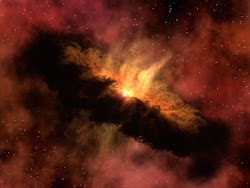
L. James Gibson
Origins 24(2):47-49 (1997).
EDITORIAL
In a book published in 1994,1 molecular biologist Periannan Senepathy proposed that life was polyphyletic — having many separate lineages with independent origins. Unfortunately, the book contained many errors and strange ideas, and was soundly rejected by the scientific community. However, the issue raised by Senepathy is of considerable interest to creationists: how many independent lineages are there, and how can we distinguish them? Recent advances in molecular genetics may help provide an answer by adding a new potential criterion for identifying independent lineages.
Several creationists have published attempts to develop criteria for identifying lineages with separate origins. For example, Marsh2 proposed two principal criteria for identifying "Genesis kinds" or "baramins": physiological compatibility (ability to hybridize) and morphological similarity. Two organisms must belong to the same "Genesis kind" if they are able to produce a fertilized egg, or if they can each interbreed with a third species.3 If fertilization is not possible, the two organisms may still belong to the same "Genesis kind" if they are sufficiently similar morphologically.
Lester and Bohlin4 discussed this issue further, taking into account the enormous increase in understanding of genetic systems that had taken place since Marsh's book was written. They proposed several criteria for identifying independent lineages, which they termed "prototypes." Their criteria for identifying a "prototype" include: morphology, embryology, chromosome morphology, structural genes, and regulatory mechanisms. They especially emphasized regulatory genetic mechanisms, including developmental processes, as important in distinguishing "prototypes."
This issue of Origins includes a brief review of a book by Walter ReMine.5 The book contains a chapter entitled "Discontinuity Systematics", in which the problem of identifying separate lineages is discussed. ReMine describes three criteria for identifying separate "baramins": ability to interbreed, experimental demonstrations of morphological overlap, and clear-cut phylogeny. By "clear-cut" phylogeny, ReMine apparently means demonstrable morphological overlap of living and fossil forms. These criteria are similar to Marsh's criteria, but developed in greater detail.
Other creationists have studied this problem, but this sample probably includes the major criteria so far proposed for identification of lineages having independent origins.
I now return to Senepathy's book, in which he proposed two criteria for identifying lineages with independent origins: the presence of unique genes, and unique developmental programs. Although Senepathy is not a creationist, his idea seems worth pursuing.
Until recently, scientists have lacked the techniques to test for unique genes or developmental programs, but this situation is changing. Scientists now have the ability to sequence entire genomes, and have successfully sequenced genomes of several unicellular species, including representatives from each of the three identified major groupings of organisms: the Eubacteria, Archaea, and Eucarya.6 Results indicate that there is considerable difference in these genomes, despite the potential for cross-species gene exchange.7
A new field is being born — comparative genomics. We can expect to see rapid advances in comparative genomics as new genomes are sequenced, especially among unicellular organisms. Progress among multicellular organisms will be slower, due to their much-larger genomes. Analysis will also be increasingly complex, due to putative gene duplications, effects of movable elements, and possible horizontal transfers. But it appears that the current procedure for estimating phylogenies by comparing gene sequences may be replaced eventually by a new procedure that compares suites of genes.8
It may be decades before we can evaluate the usefulness of comparative genomics for identifying independent lineages. But at least the idea can be tested. A means for confidently identifying separate "baramins" may yet be developed.
ENDNOTES
1. Senepathy P. 1994. The independent birth of organisms. Madison, WI: Genome Press.
2. Marsh FL. 1947. Evolution, creation and science. 2nd ed. Washington, DC: Review and Herald Publishing Assn.
3. See: Scherer S. 1993. Typen des Lebens. Studium Integrale Biologie. Berlin: Pascal Verlag. Reviewed in Origins 23(2):106-109.
4. Lester LP, Bohlin RG. 1984. The natural limits to biological change. Grand Rapids, MI: Zondervan.
5. ReMine WJ. 1993. The biotic message. St Paul, MN: St Paul Science.
6.
1. Eubacteria, e.g., Kunst F, et al. 1997. The complete genome sequence of the Gram-positive bacterium Bacillus subtilis. Nature 390:249-256.
2. Archaea, e.g., Bult CJ, et al. 1996. Complete genome sequence of the methanogenic Archaeon, Methanococcus jannaschii. Science 273:1058-1073.
3. Eucarya: Mewes HW, et al. 1997. Overview of the yeast genome. Nature 387:7-65.
7. E.g.,
1. Heinemann JA. 1991. Genetics of gene transfer between species. Trends in Genetics 7:181-185;
2. Delwich CF, Palmer JD. 1996. Rampant horizontal transfer and duplication of rubisco genes in eubacteria and plastids. Molecular Biology and Evolution 13:873-882.
8. Olsen GJ, Woese CR. 1997. Archaeal genomics: an overview. Cell 89:991-994.
© 1997
All contents copyright Geoscience Research Institute. All rights reserved.
Orion Nebula

Shtreimel Galaxy

"Astronomy compels the soul to look upwards and leads us from this world to another." — -Plato.
Quantum...

"Those who are not shocked when they first come across quantum mechanics cannot possibly have understood it".
..........................—Niels Bohr
..........................—Niels Bohr
Cone Nebula

"The universe is simple; it's the explanation that's complex."
Guánica

Daily Quote
"Science without religion is lame.
Religion without science is blind." - Albert Einstein
Religion without science is blind." - Albert Einstein
Water Molecules

...another quote
"The important thing in science is not so much to obtain new facts as to discover new ways of thinking about them".
~William Lawrence Bragg
Translate This Page
DNA

Blog Archive
Rosette Nebula

My Chat
Carolina

Visitors
Newton Centre (USA)
Piu (Brazil)
Tipei (Taiwan)
Douglasville (USA)
Rockville (USA)
North Island (New Zealand)
Tucson (USA)
Amsterdan (Netherlands)
Moscow (Rusia)
©2008.All rights Reserved September 2008